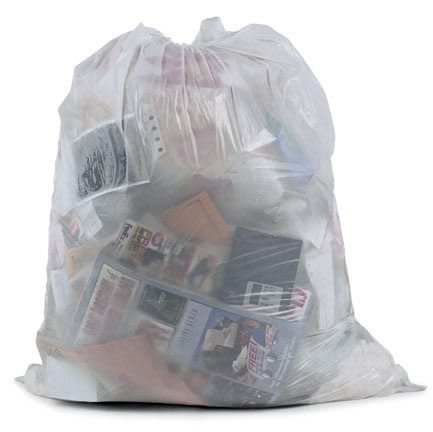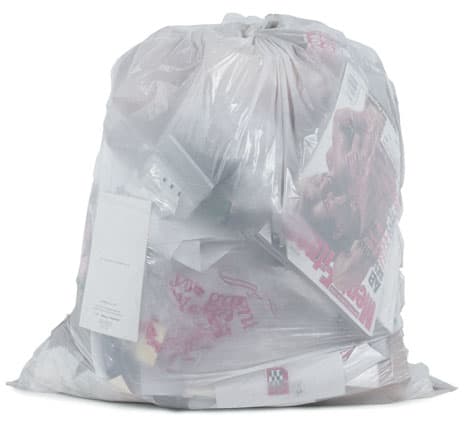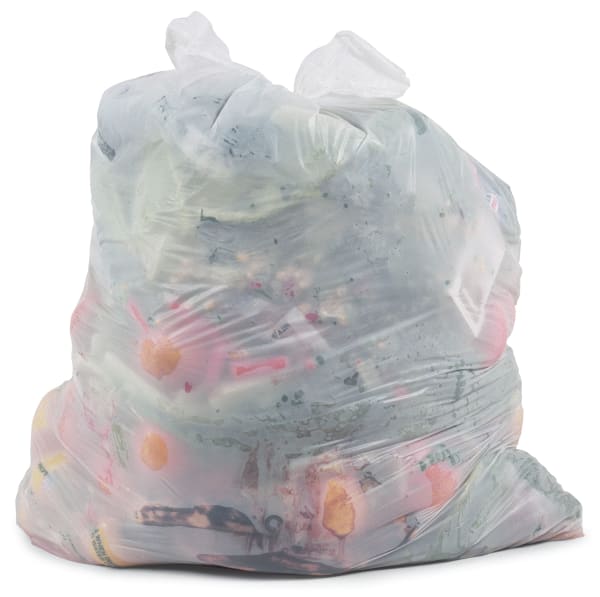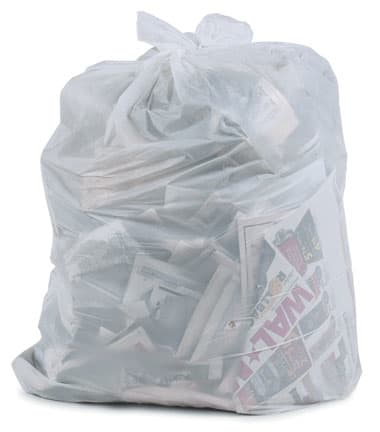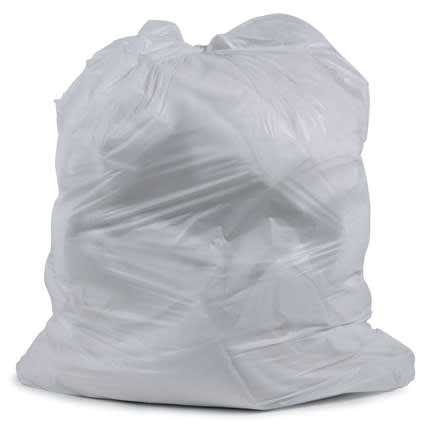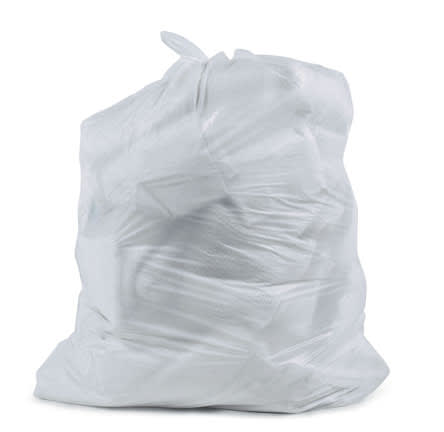Trash Bags 1998
"And then there’s the trash…or rather, big, beautiful bags of trash. Afghans (1998), a large-format photograph, displays two translucent white garbage bags each with a dark and multicolor patterned afghan inside. Chuck Ramirez presents trash bags staged on a white ground, as aesthetic “things” to be looked at. As the gaze lingers, so too do the effects of Ramirez’ staging: Who owns the afghans? Have they stayed in their tightly knotted bags in the basement or the attic all summer long? Do they have the scent of damp mildew or stale heat? Are they the work of grandma’s pragmatic hand or are they dime-a-dozen knockoffs? These sacks caught on clinical backgrounds pair formality with informality. The “inside” reveals itself through the outside.
Portraiture is one of the underlying characteristics in Ramirez’ work. By naming these works, the artist bestows each with a narrative and identity: Wal-Mart (1998) takes its title from the visibility of an advertising leaflet;Fitness(1998) is so named because of a body building magazine’s positioning towards the front of the bag. These works are not about branding or the discarding of such, nor do they simply reveal their contents. They are staged bags stuffed with sorted refuse. It is this aspect in particular, and in this series specifically, that plays so well to the inquisitive and contemplative mode of the object-as-object’s “presentness” and the more cynical and humorous mode of its “deadpannedness” that is such a significant part of Ramirez’ oeuvre.
In Black Sack 1, Black Sack 2, White 1, White 2 (all 1998), the bags are opaque, and as evidenced by the titles, fairly self-referential. In this way, these works lend themselves most to a pop-cum-minimalist aesthetic; yet they also tend to subvert the direct referentiality that those aesthetics so envisaged. Perhaps they subvert in their trashiness. They are literally stuffed with garbage. On a purely formal level, they defy the regimented and graphic form of the canonical works of 1960s pop and minimalism. This wonderful play of the informal and the absolute low (trash), masquerading on a formal stage is the hallmark of this series."
-Essay by Jennifer Davy
-
 Chuck RamirezTrash Bags: Absolut, 1998Pigment inkjet print60 x 48 in
Chuck RamirezTrash Bags: Absolut, 1998Pigment inkjet print60 x 48 in
152.4 x 121.9 cmEdition of 10 -
 Chuck RamirezTrash Bags: Black Sack 1, 1998Pigment inkjet print60 x 48 in
Chuck RamirezTrash Bags: Black Sack 1, 1998Pigment inkjet print60 x 48 in
152.4 x 121.9 cmEdition of 10 -
 Chuck RamirezTrash Bags: Black Sack 2, 1998Pigment inkjet print60 x 48 in
Chuck RamirezTrash Bags: Black Sack 2, 1998Pigment inkjet print60 x 48 in
152.4 x 121.9 cmEdition of 10 -
 Chuck RamirezTrash Bags: FedEx, 1998, 2020Pigment inkjet print60 x 48 in
Chuck RamirezTrash Bags: FedEx, 1998, 2020Pigment inkjet print60 x 48 in
152.4 x 121.9 cmEdition of 10 -
 Chuck RamirezTrash Bags: Fitness, 1998Pigment inkjet print60 x 48 in
Chuck RamirezTrash Bags: Fitness, 1998Pigment inkjet print60 x 48 in
152.4 x 121.9 cmEdition of 10 -
 Chuck RamirezTrash Bags: Vegan, 1998Pigment inkjet print60 x 48 in
Chuck RamirezTrash Bags: Vegan, 1998Pigment inkjet print60 x 48 in
152.4 x 121.9 cmEdition of 10 -
 Chuck RamirezTrash Bags: WalMart, 1998Pigment inkjet print60 x 48 in
Chuck RamirezTrash Bags: WalMart, 1998Pigment inkjet print60 x 48 in
152.4 x 121.9 cmEdition of 10 -
 Chuck RamirezTrash Bags: White 1, 1998Pigment inkjet print60 x 48 in
Chuck RamirezTrash Bags: White 1, 1998Pigment inkjet print60 x 48 in
152.4 x 121.9 cmEdition of 10 -
 Chuck RamirezTrash Bags: White 2, 1998Pigment inkjet print60 x 48 in
Chuck RamirezTrash Bags: White 2, 1998Pigment inkjet print60 x 48 in
152.4 x 121.9 cmEdition of 10 -
 Chuck RamirezTrash Bags: Afghans, 1998Pigment inkjet print48 x 60 in
Chuck RamirezTrash Bags: Afghans, 1998Pigment inkjet print48 x 60 in
121.9 x 152.4 cmEdition of 10





